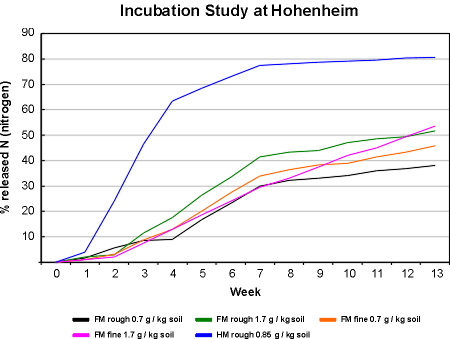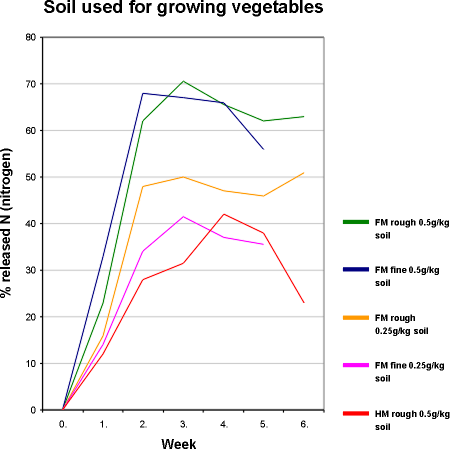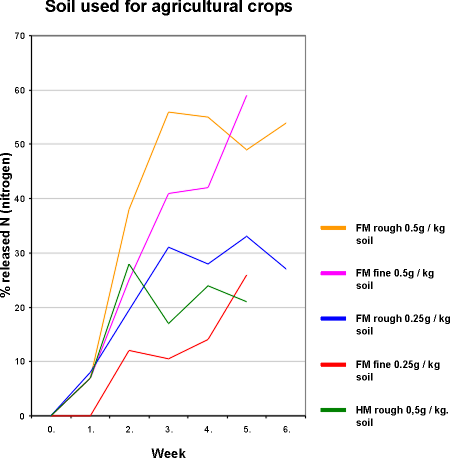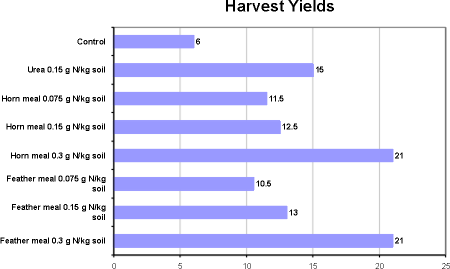Environment & Recycling
Recycling of Feathers and Down
In order to deal with the environment in a way that resources are conserved, waste should be recycled as far as possible to return to the added-value cycle as secondary materials. It is estimated that bedfeather processing in Germany alone causes around 950 tons refuse feathers. With a view to the European market, this number multiplies accordingly. So far, refuse feathers have either been picked up by disposal companies (e.g. gardeners), taken to the landfill or destroyed in waste incineration. The disposal of feathers in landfills or in waste incineration will become increasingly problematic in the future.
On behalf of the EDFA, the University of Hohenheim therefore carried out the research project “Use of a waste product from poultry feathers as organic nitrogen fertilizer in agriculture and horticulture”.
In order to be able to use feathers as fertilizers, three requirements had to be checked in addition to the fertilizer law to which secondary raw material fertilizers are subject:
- What are the valuable ingredients?
- What are the pollutants?
- What about plant tolerance and fertilizing effectiveness?
Valuable ingredients:
| Comparison of the nutrient content of feather meal, horn meal and manure | |||
| Feather Meal | Horn Meal | Manure | |
| (Average values, examples) | |||
| organic matter (C)(%) | 45 | 70 | 18 |
| Nitrogen (%) | 14 | 10 | 1.7 |
| C / N ratio | 3.2 | 7 | 10.6 |
| Other main nutrients (g / kg TS) | |||
| Phosphorus | 2.9 | 1.8 | 2.5 |
| Potassium | 1.5 | 1.2 | 5.0 |
| Magnesium | 0.8 | 0.3 | 1.5 |
Fig. 1 – Comparison of the nutrient content of feather meal, horn meal and manure
Pollutants:
| Heavy metal content of feather meal in comparison with green compost | ||
| Feather Meal | Green compost | |
| (Average values; mg/kg TS) | ||
| Lead | < 4 | 50 |
| Cadmium | < 0.4 | 0.4 |
| Chrome | < 4 | 25 |
| Copper | 15 | 30 |
| Nickel | < 4 | 10 |
| Mercury | <0.02 | 0.2 |
Fig. 2 – Heavy metal concentration of feather meal in comparison to green compost
Plant tolerance and fertilizing effectiveness:
| Chemical binding of nutrients in feather waste | |
| Situation: | Nutrients are bound in keratins (horny substances) = high molecular scaffold body limited high chemical and mechanical resistance |
| Problem: | very low solubility and availability of nutrients e.g. for plant and animal nutrition Instantly soluble nitrogen: approx.0.5% |
| Approach: | Improving nitrogen availability by grinding feather waste into feather meal (to promote microbial conversion in the soil into soluble N-compounds that can be used by plants) |
| Assignment: | Analysis of the use of feather meal as organic nitrogen fertilizer in two research projects from:
|
Fig. 3 – chemical binding of nutrients in feather waste
When using feather meal, the study concentrated particularly on organic farming and horticulture, since no quickly soluble, synthetic mineral fertilizers are used here. It is often gently fertilized with horn meal products and castor meal. The use of feather meal in these companies would be ideal and conceptually feasible.
As part of the research work, incubation experiments were initially carried out with the aim to investigate the time period for the release of the nitrogen contained in the feather meal. This also in comparison with another organic nitrogen fertilizer (horn meal).
Here feather meal of different grindings was mixed with the soil in graded quantities and stored for several weeks under controlled conditions (high temperatures and air humidity). At certain intervals, the containers with the soil-feather meal mixtures were removed and the content of mineralized (soluble) nitrogen (nitrate, ammonium) in the soil solution was identified. The tests were carried out in Germany and China.
It is noteworthy that the percentage of nitrogen released in the tests in Germany was somewhat better for horn meal than for feather meal. In China it was the other way round.

Fig. 4: Release of nitrogen from feather meal and horn meal in a nitrogen-poor clay soil (Institute for Plant Nutrition at the University of Stuttgart-Hohenheim)


Fig. 5: Release of nitrogen (in %) from feather meal and horn meal in a market gardening and an agriculturally used soil (incubation tests at the University of Beijing)
The result in Fig. 4, i.e. a nitrogen release of up to 50% after 12 weeks, can be rated as very good. In a further step of the research work, container tests were then carried out. The aim was to analyze the fertilizing effectiveness of feather meal in comparison to horn meal and mineral fertilization (horn substance).

Fig. 6: Harvest yields (fresh weights) of “vegetable rape” when fertilized with coarsely ground feather and horn meal (1mm) as well as with urea on an agricultural land (container tests University of Beijing)
Feather meal with different degrees of grinding was used as fertilizer in graduated quantities to different soils and the influence on the crop yields and nitrogen contents of the market gardening was determined.
Summary:
The incubation and container tests show:
- a relatively quick and continuous nitrogen release from feather meal
- a good fertilizing effect of feather meal, which is on a par with that of horn meal.
The use of feather meal as an organic nitrogen fertilizer in agriculture and horticulture seems promising.
An inquiry to the German Federal Ministry of Agriculture showed that there is great public interest in secondary raw material fertilizers, for example nitrogen fertilizers made from feather meal, and that approval could even be granted on request.
